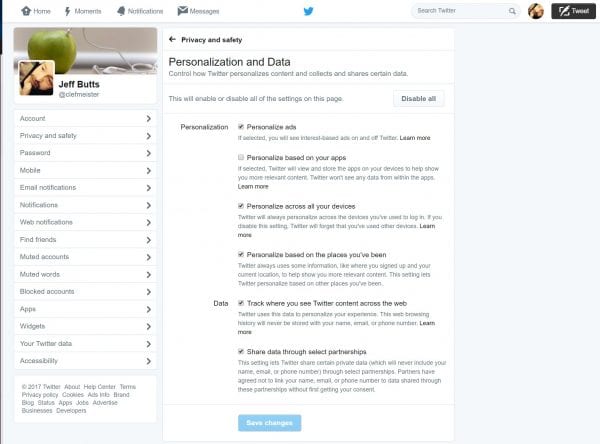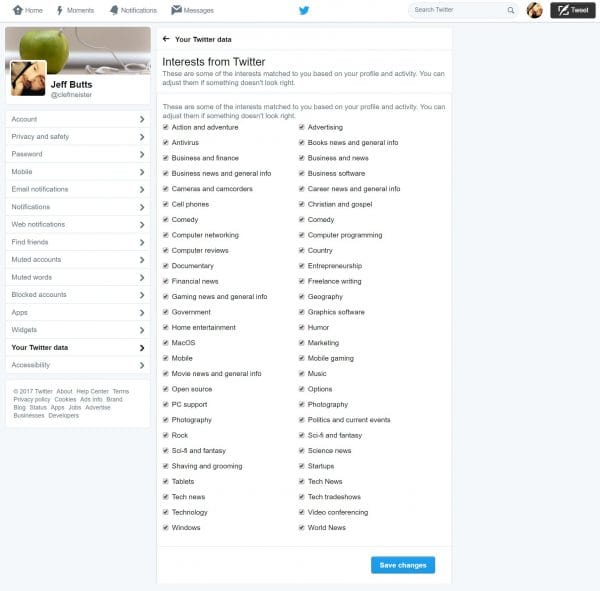Twitter giveth, and Twitter taketh away. That’s the long and short of the social network’s announcements on May 18, 2017. In one fell swoop, Twitter is providing us with both more and less control over our data. When it comes to Twitter and privacy, it just can’t be simple.

Killing the Do Not Track Initiative
Since 2012, Twitter had agreed to honor Do Not Track, or DNT. In a nutshell, DNT worked on an honor system for tracking. If you had your browser configured for Do Not Track, the social network pledged it wouldn’t record your location, browsing history, interests, or the like. It wasn’t so much a guarantee as a “pinky promise,” and one that quite a few unethical sites were more than happy to violate.
Twitter, as far as we know, kept to its word and honored DNT settings, but that’s soon to be a thing of the past. Whereas Twitter and privacy could have been synonymous with each other in the past, they certainly aren’t now.
Beginning June 18, 2017, Twitter will stop honoring DNT settings. What that means is that you’ll need to start being more proactive about your privacy and safety if you don’t want your Twitter feed overwhelmed with personalized ads. Fortunately, Twitter has provided you with a way to opt out of much of that advertising. You’ll find it by visiting Twitter on the web, logging in, and clicking your profile picture. Then, click Settings and privacy > Privacy and safety. Finally, click Edit beside Personalization and Data. Enable or disable whichever ones you prefer.

When It Comes to Twitter and Privacy, Is Less More?
On the other hand, Twitter has made it more transparent to see how you’re being tracked. From the same settings page, you can click on Your Twitter Data to find out what’s been tracked so far. I learned that I am part of 11,987 audiences from 1,907 advertisers. You can even request a list of those advertisers if you want to opt out of their tracking.
There’s some other interesting information there. You’re able to view the interests matched to you based on your profile and activity, as well as interests from Twitter’s partners. You’re able to edit this data, as well, removing thins that don’t really interest you.
What’s It All Mean?
Really, it probably doesn’t mean anything for most Twitter users. If you are aggressive about privacy and not being tracked, you’ve likely already taken steps to prevent that. You’ve probably already turned off whatever tracking options might have been enabled in the first place. However, if the idea of Twitter sending your tweet history to advertisers suddenly frightens you, then you should take steps to stop the social network from being able to track you. You should also opt out of as much data sharing as you can.
